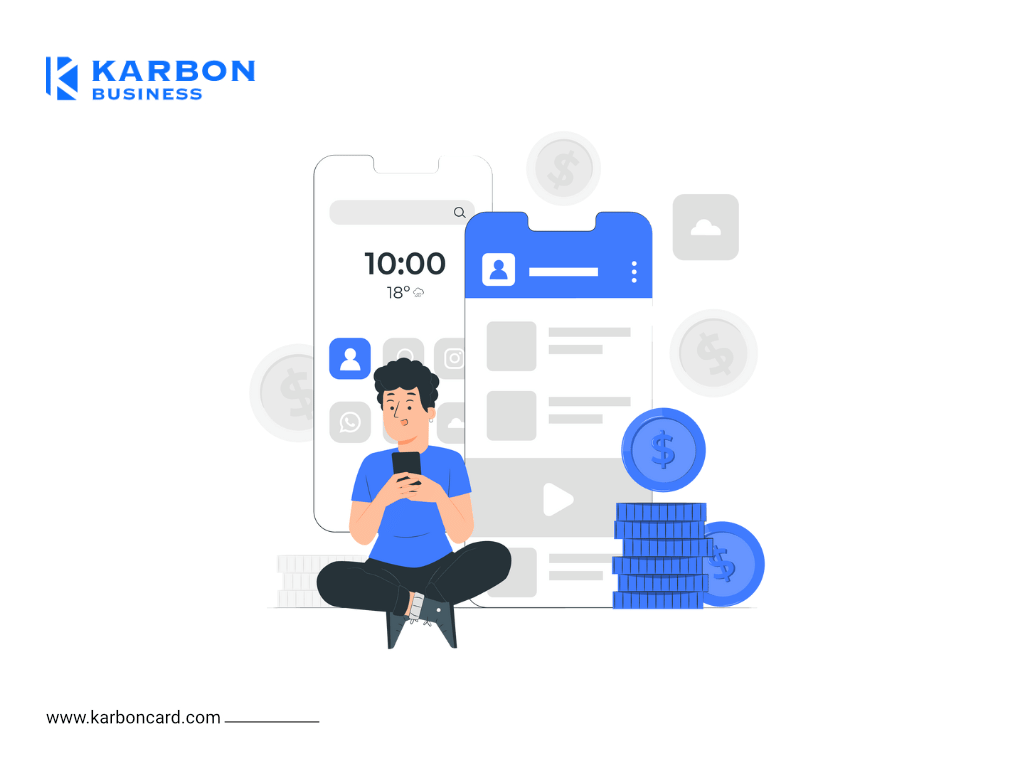Let’s explore opportunities, tailor strategies, and chart a course to financial success together.
If you sell your products or services overseas, you already know one harsh truth: not every buyer is honest.
You ship a product to a customer in the US or Europe, they sign for it, use it, and then tell their bank they never got it or that the charge was unauthorized. Just like that, your money is pulled back through a chargeback.
It feels unfair, but it happens every day. In fact, industry reports say up to 80 percent of all chargebacks in e-commerce are actually friendly fraud (a polite name for outright theft). Indian e-commerce brands are hit hardest because fighting a false claim across borders is time-consuming, costly, and rarely ends in their favour.
This guide explains how chargeback fraud works, why global sellers are more exposed, and how you can protect your payments with safer methods like SWIFT or direct bank transfers.
What Is Chargeback Fraud?
Chargebacks are designed to protect customers from genuine problems, like unauthorized charges, defective items, or orders that never arrive. But some buyers abuse this system on purpose.
Chargeback fraud, often called friendly fraud, happens when a buyer deliberately misuses the chargeback process to get a refund for a product or service they actually received.
Chargeback vs Refund
A chargeback and a refund both return money to the customer, but they work in different ways.
A refund happens when a customer contacts the seller directly to get their money back. This usually happens if an item is faulty, does not match the description, or the customer changes their mind. The seller processes the refund through their payment system, and both sides agree to close the sale.
A chargeback skips the seller entirely. Instead, the customer contacts their bank or card company to dispute the charge. The bank then forces the payment processor to reverse the transaction if the claim is valid. Unlike a refund, a chargeback can cost the seller extra fees and may damage their payment reputation if it happens too often.
In short, a refund is a voluntary return from the business, while a chargeback is forced by the bank when the buyer raises a dispute.
How Does Chargeback Fraud Take Place?
Chargeback fraud is ridiculously simple.
A customer places an order, waits for delivery, uses the product or service, and then falsely claims to their bank that the charge was unauthorized or the item never arrived. This forces the merchant to refund the money, while the buyer keeps the product or benefits.

Chargeback Fraud in Global E-commerce
Friendly fraud has become a major challenge for global e-commerce businesses. Studies show that friendly fraud now accounts for 60 to 80 percent of all chargebacks around the world. International sellers have it even harder. Banks and card networks usually protect the buyer first, especially when a purchase crosses borders. Merchants who sell digital goods, online subscriptions, or services often struggle to prove that a customer received what they paid for.
For Indian exporters, freelancers, and SaaS companies working with clients in the United States or Europe, chargeback fraud can be especially damaging. A single false dispute can mean lost revenue, additional fees from payment processors like PayPal or Stripe, and penalties that affect your account standing. If too many chargebacks occur, a business risks having its payment account frozen or permanently shut down.
In simple terms, chargeback fraud is theft hidden behind the rules designed to protect honest customers. Fighting it takes time, money, and solid proof. That is why having clear policies, good transaction records, and strong evidence is essential for businesses that serve international customers.
Risks of Chargeback Fraud for Indian Businesses
Chargeback fraud is a global problem but Indian businesses face some unique systemic and structural challenges when dealing with international clients.
1. Currency Conversion Delays Can Hide Payment Disputes
International card payments go through multiple currency conversions and intermediary banks. These layers introduce delays and discrepancies that can make it hard for Indian businesses to detect a fraudulent transaction until it’s too late. By the time a chargeback is initiated, the service may have already been delivered.
2. No Local Representation in Buyer Markets
Having a local presence (like a US based office or legal entity) can help with buyer side verification, legal recourse, and faster dispute handling. Indian exporters without such representation are at a disadvantage both legally and perceptually when challenging a chargeback initiated by a foreign buyer.
3. Disproportionate Chargeback to Sale Ratio Penalties
Many payment processors (like PayPal) freeze merchant accounts or impose heavy penalties if the chargeback ratio crosses 1%, even if those chargebacks are fraudulent. For Indian SaaS businesses or exporters with lower transaction volumes, even 2 or 3 chargebacks can breach the threshold and lead to withheld funds or account termination.
4. Dispute Resolution
Mastercard’s chargeback process has multiple stages – pre-dispute, chargeback initiation, merchant response, decisioning, and arbitration. This can be overwhelming for Indian businesses, especially SME,s when dealing with international disputes.
5. Compliance
RBI’s Exchange Control Manual has strict compliance requirements for exporters – timely submission of export documents and specified payment methods. Non-compliance can attract penalties and impact future transaction capability.
So, Indian businesses need to take measures against chargeback fraud like using secure payment channels and maintaining transaction records meticulously.
How to Prevent Chargeback Fraud
Chargeback fraud can be tough to reverse but it’s possible to prevent. Indian businesses dealing with international clients can reduce their risk by being more documentative, using better payment infrastructure, and being proactive about client screening. Here’s how to get started:
Use Service Agreements and Contracts
Sounds obvious but you should always formalize your engagements with clear contracts (even if you are a freelancer). These should have:
- Payment terms and refund policy
- Scope of work or deliverables
- Client responsibilities and deadlines
- Jurisdiction for legal disputes (important for cross-border work)
A signed contract—even digitally—adds a lot of weight to your case if a dispute arises, especially if escalated to a payment processor or bank.
Collect Proof of Delivery or Performance
For digital services or consulting, “delivery” isn’t always tangible, but it can still be verified. Keep:
- Email chains confirming task completion
- Shared drive timestamps or signed-off deliverables
- Screenshots or Zoom recordings of live work sessions
- User login records (for SaaS)
This kind of documentation strengthens your chargeback rebuttal file and proves the service was used or delivered.
Vet Clients Before Onboarding
Prevention starts before the invoice. Be cautious of:
- First-time clients placing large orders
- Incomplete business information (no website, no LinkedIn)
- Requests for quick turnarounds + upfront work
- Clients who resist signing basic documentation
For international clients, especially in high-risk regions, a basic due diligence check (e.g., business registry lookup, VAT verification) can go a long way.
Use Invoicing Tools With Clear Terms
Choose invoicing platforms that let you embed terms of service and refund policies into the invoice. This helps:
- Make your policies clear and legally documented
- Provide traceability for when payment was requested and made
- Automatically generate audit trails that support your case
It also improves cash flow visibility and makes clients less likely to dispute impulsively.
Avoid High-Risk Payment Methods for Large International Deals
While credit cards and wallets are convenient, they’re also easiest to reverse via chargeback. For high-value international projects, consider safer alternatives like:
- SWIFT transfers via virtual bank accounts
- Advance payments with milestone releases
- Escrow services for added buyer-seller protection
These methods don’t allow chargebacks in the same way cards do, giving Indian businesses more certainty and legal clarity.
Why SWIFT Transfers Are Safer?
When dealing with international clients, one of the best ways to protect your business from chargeback fraud is by using SWIFT transfers. Unlike card payments, these transfers move money directly between verified bank accounts through a globally recognized messaging system—the Society for Worldwide Interbank Financial Telecommunication (SWIFT).
Here’s why Indian exporters and service providers are increasingly switching to SWIFT for secure cross-border transactions:
Payments Are Irreversible
Once a SWIFT payment is initiated and settled, it cannot be reversed without the sender’s explicit consent. This eliminates the risk of buyers disputing a charge after receiving your product or service.
Higher Verification Standards
To make a SWIFT payment, your client must initiate the transfer through their regulated financial institution, which often includes multi-factor authentication, identity verification, and internal compliance checks. This reduces the risk of fraud compared to credit cards or wallets, where identity verification can be weak.
Best for High-Value and Recurring Transactions
For larger invoices—common in software licensing, consulting or bulk product orders—SWIFT is ideal. Many Indian B2B businesses using card payments face limits or high fees on larger amounts. SWIFT scales well for payments worth thousands of dollars or more, making it a preferred method for long-term or enterprise clients.
Reduced Intermediary Risks with Virtual Bank Accounts
When combined with international virtual accounts offered by fintech platforms like Karbon, SWIFT transfers become even more efficient. You can receive payments in USD, EUR, GBP, etc., and convert them to INR at competitive rates without funds getting stuck in intermediary bank loops that slow down traditional exports.
Transparent, Auditable and RBI-Compliant
Each SWIFT transfer generates a unique MT103 document, which acts as a digital proof of payment. This is not only useful for reconciling invoices but also helps with RBI export documentation such as FIRA (Foreign Inward Remittance Advice). It keeps your compliance clean and audit-ready.
Can global sellers (Amazon, Shopify, other merchants) use SWIFT transfers instead of cards?
For most ecommerce marketplaces like Amazon, Shopify, Etsy, or eBay, the standard checkout process is built around card payments, digital wallets, or alternative payment methods like PayPal. These platforms are designed for customer convenience. Here, buyers pay instantly with a credit/debit card, and the platform processes the payment, deducts fees, and settles the balance to the seller’s account.
In this model, sellers cannot usually force buyers to pay by SWIFT transfer, because that would break the seamless checkout flow. Customers expect one-click payments with cards or wallets, not the extra steps of sending a bank transfer.
However, B2B sellers, exporters, freelancers, SaaS providers, or agencies working directly with clients (outside marketplaces) can absolutely use SWIFT. This is common for large invoices, retainers, consulting fees, or export shipments where both parties agree to wire money from bank to bank.
SWIFT Transfers vs. Card Payments: What’s Safer for International Business?
How Karbon Forex Can Help Prevent Chargeback Fraud?
Karbon is a smarter alternative to card payments for Indian exporters, agencies, SaaS companies and freelancers. With Karbon:
- You can get paid via bank wires (SWIFT), not cards – no chargebacks.
- Your clients pay into local bank accounts in the US, UK, or EU, and you get paid in INR back home, with full FIRA-compliant documentation.
- Every transaction comes with MT103 proof and end-to-end tracking so your cash flow is auditable and secure.
- Karbon’s system has built-in KYC checks and compliance layers to ensure every payment is legit and safe.
- Reduce foreign exchange markups and fees compared to card processors who charge 3-4.5% per transaction to <1% charged by Karbon.
- Karbon gives you auto-reporting and downloadable transaction records for compliance filings.
Whether you’re billing US clients for development services or collecting retainers from Europe, Karbon lets you do it the professional way.
FAQs
Is chargeback fraud illegal?
Yes. Chargeback fraud, when a buyer intentionally disputes a legitimate transaction to reclaim funds, is a form of digital financial fraud. While the process is often handled by card networks, knowingly abusing it can be criminal intent and financial misrepresentation.
What are the legal consequences of chargeback fraud in India?
In India, knowingly committing chargeback fraud can lead to serious consequences under Information Technology Act, 2000 and Indian Penal Code (IPC). Offenders can be charged with cheating (Section 420 IPC), identity misuse and cybercrime. Penalties can include fines and imprisonment if the fraud involves forged documents or cross-border deceit. Businesses can also sue for damages or file a complaint with Cyber Crime Cell of Indian Police.
Can chargeback fraud be reported to authorities internationally?
Yes, especially if the transaction value is high. Merchants can report fraudulent chargebacks to Interpol’s cybercrime division and local cyber cells. But enforcement varies by jurisdiction and volume.
What Is a Chargeback Request?
A chargeback request is when a customer asks their bank or card issuer to reverse a transaction. This usually happens when they believe they were charged by mistake, did not receive the product or service, or suspect fraud. The bank investigates the claim, contacts the merchant, and may refund the money if the dispute is valid. Chargebacks protect customers but can be costly for businesses if abused.
What Is the Chargeback Process?
The chargeback process starts when a cardholder disputes a transaction. The bank reviews the claim and temporarily credits the customer’s account. It then contacts the merchant for evidence to prove the charge was valid. If the merchant provides strong proof, the charge stays. If not, the bank reverses the charge and refunds the customer permanently. This process can take weeks and may involve extra fees for the merchant.
What Is a Chargeback in Credit Cards?
A chargeback in credit cards is the reversal of a payment made with a credit card when the cardholder disputes it. It acts as consumer protection for unauthorized or faulty transactions. When approved, the amount is refunded to the cardholder by the issuing bank, and the merchant loses the sale amount plus any related fees. Frequent chargebacks can harm a business’s reputation and lead to penalties.











